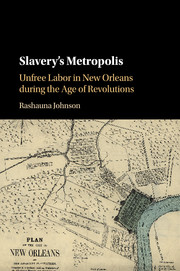Book contents
- Slavery’s Metropolis
- Cambridge Studies on the African Diaspora
- Slavery’s Metropolis
- Copyright page
- Dedication
- Contents
- Figures
- Maps
- Preface
- Book part
- List of Abbreviations
- Map
- Introduction
- 1 Revolutionary Spaces
- 2 Market Spaces
- 3 Neighborhood Spaces
- 4 Penal Spaces
- 5 Atlantic Spaces
- Conclusion
- Selected Bibliography
- Index
- References
Selected Bibliography
Published online by Cambridge University Press: 11 October 2016
- Slavery’s Metropolis
- Cambridge Studies on the African Diaspora
- Slavery’s Metropolis
- Copyright page
- Dedication
- Contents
- Figures
- Maps
- Preface
- Book part
- List of Abbreviations
- Map
- Introduction
- 1 Revolutionary Spaces
- 2 Market Spaces
- 3 Neighborhood Spaces
- 4 Penal Spaces
- 5 Atlantic Spaces
- Conclusion
- Selected Bibliography
- Index
- References
- Type
- Chapter
- Information
- Slavery's MetropolisUnfree Labor in New Orleans during the Age of Revolutions, pp. 209 - 230Publisher: Cambridge University PressPrint publication year: 2016



